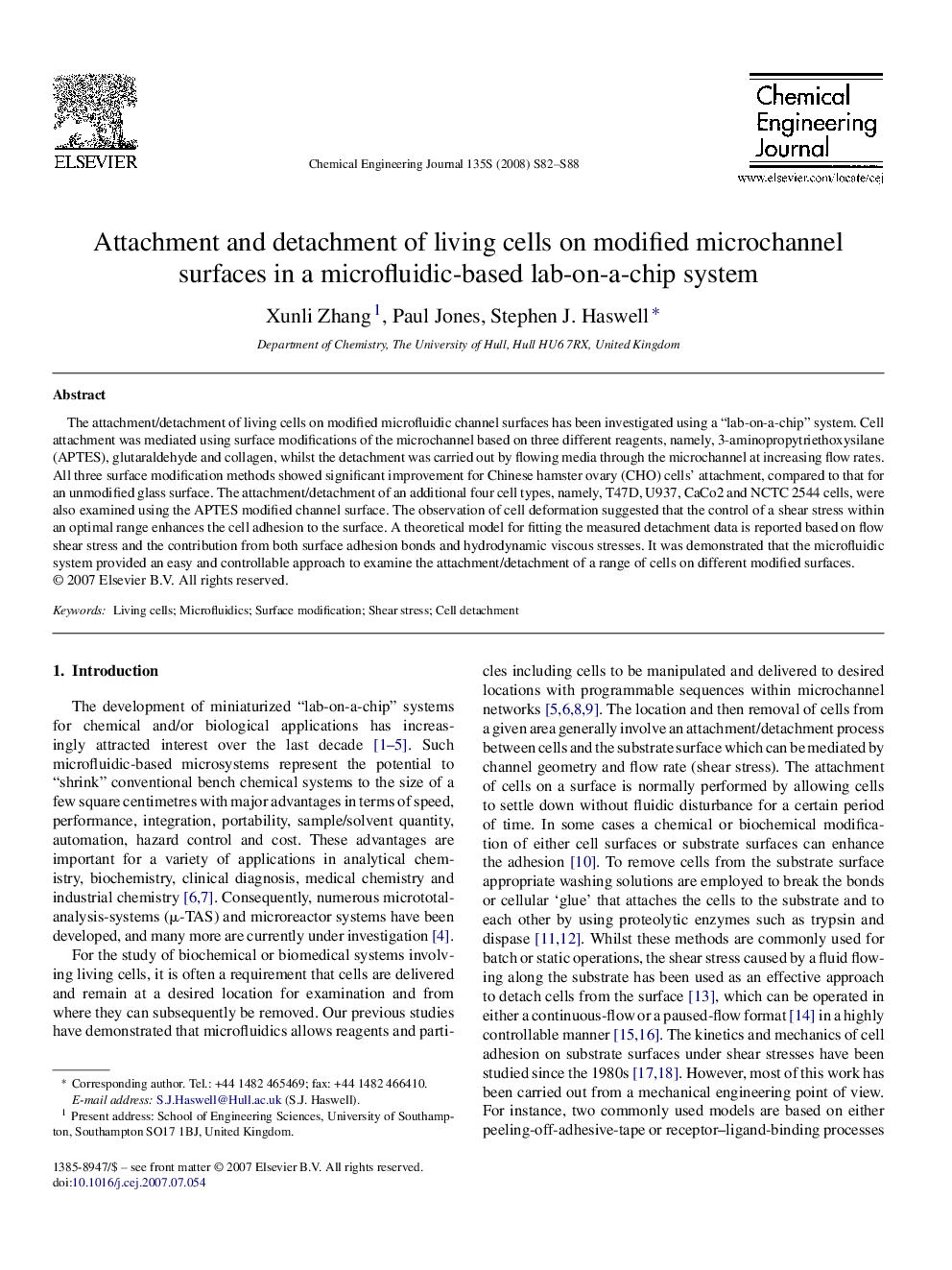| کد مقاله | کد نشریه | سال انتشار | مقاله انگلیسی | نسخه تمام متن |
|---|---|---|---|---|
| 153712 | 456537 | 2008 | 7 صفحه PDF | دانلود رایگان |

The attachment/detachment of living cells on modified microfluidic channel surfaces has been investigated using a “lab-on-a-chip” system. Cell attachment was mediated using surface modifications of the microchannel based on three different reagents, namely, 3-aminopropytriethoxysilane (APTES), glutaraldehyde and collagen, whilst the detachment was carried out by flowing media through the microchannel at increasing flow rates. All three surface modification methods showed significant improvement for Chinese hamster ovary (CHO) cells’ attachment, compared to that for an unmodified glass surface. The attachment/detachment of an additional four cell types, namely, T47D, U937, CaCo2 and NCTC 2544 cells, were also examined using the APTES modified channel surface. The observation of cell deformation suggested that the control of a shear stress within an optimal range enhances the cell adhesion to the surface. A theoretical model for fitting the measured detachment data is reported based on flow shear stress and the contribution from both surface adhesion bonds and hydrodynamic viscous stresses. It was demonstrated that the microfluidic system provided an easy and controllable approach to examine the attachment/detachment of a range of cells on different modified surfaces.
Journal: Chemical Engineering Journal - Volume 135, Supplement 1, 15 January 2008, Pages S82–S88